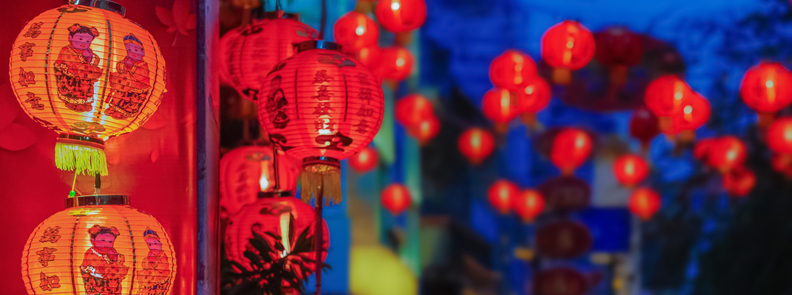Lunar New Year celebrations began 28 January and continue for two weeks – it’s the longest holiday on the Chinese calendar. This time celebrations mark the Year of the Rooster, but I’m here to talk about another animal important to Chinese New Year: lobster.
On top of the parades, lion dances and lanterns, food also plays an important role in New Year celebrations, and specific items are always included. Dumplings and spring rolls bring wealth, longevity noodles signify a long life, and fish symbolises an increase in prosperity. But in China, where the colour red is considered lucky, lobsters are appearing more and more, especially as part of New Year’s Eve family feasts.
Lucky lobsters
Lobsters have become a popular item for New Year’s Eve family dinners for many reasons. Not only do they turn red when cooked, they also resemble dragons, which are heavily featured in New Year festivities. And in China, where lobsters are imported and more expensive than local seafood, they serve as a status symbol.
My colleague, Gao Rui, Communications Manager in China, told us that the lobsters are usually steamed, baked with butter, or served as sashimi. She also said that it’s important to keep the head and tail on the plate.
The lobster’s journey
Knowing whole lobsters are heavily featured during this holiday, I visited Maine Coast to talk about shipping whole, live lobsters halfway across the world. Maine Coast, a live lobster wholesaler located in York, Maine, maintains year-round supply by working with lobstermen throughout the coasts of Maine and Atlantic Canada.
Lobsters arrive, usually by the truckload, and get sorted by size and shell quality. They’re then placed in crates that hold about 90 pounds of lobster and returned to the water to await shipping.
Maine Coast sells lobster locally, nationally, and internationally. Much of the lobster that goes abroad ends up in China and a not insignificant portion of that happens during Chinese New Year.
As seafood exports to China have continued to increase, lobsters have gone from traveling abroad on freight planes to hitching a ride on commercial passenger flights.
Increasing demand and sustainability
This year, the demand for Homarus americanus was so high that Chinese buyers ordered three chartered planes full of lobster. The planes left from Halifax Airport in Canada, flew for about 19 hours, and landed in Zhengzhou, capital of the central province of Henan. After clearing customs, the lobsters were then distributed to their final destinations, including Shanghai and Beijing.
Consumers in Asia want fresh, safe, high quality seafood. To ensure all of these qualities, they want it to be traceable. And that’s where MSC can help open doors.
“MSC [certification] differentiates us from similar products,” Lyle Brown, Asian sales manager at Maine Coast, explained. Buyers in China and other parts of Asia “want a certified ‘green’ product and that’s what the MSC does.”
So, sometime between now and 15 February, celebrate the Year of the Rooster by steaming a tasty, red, dragon-like, certified sustainable lobster.

